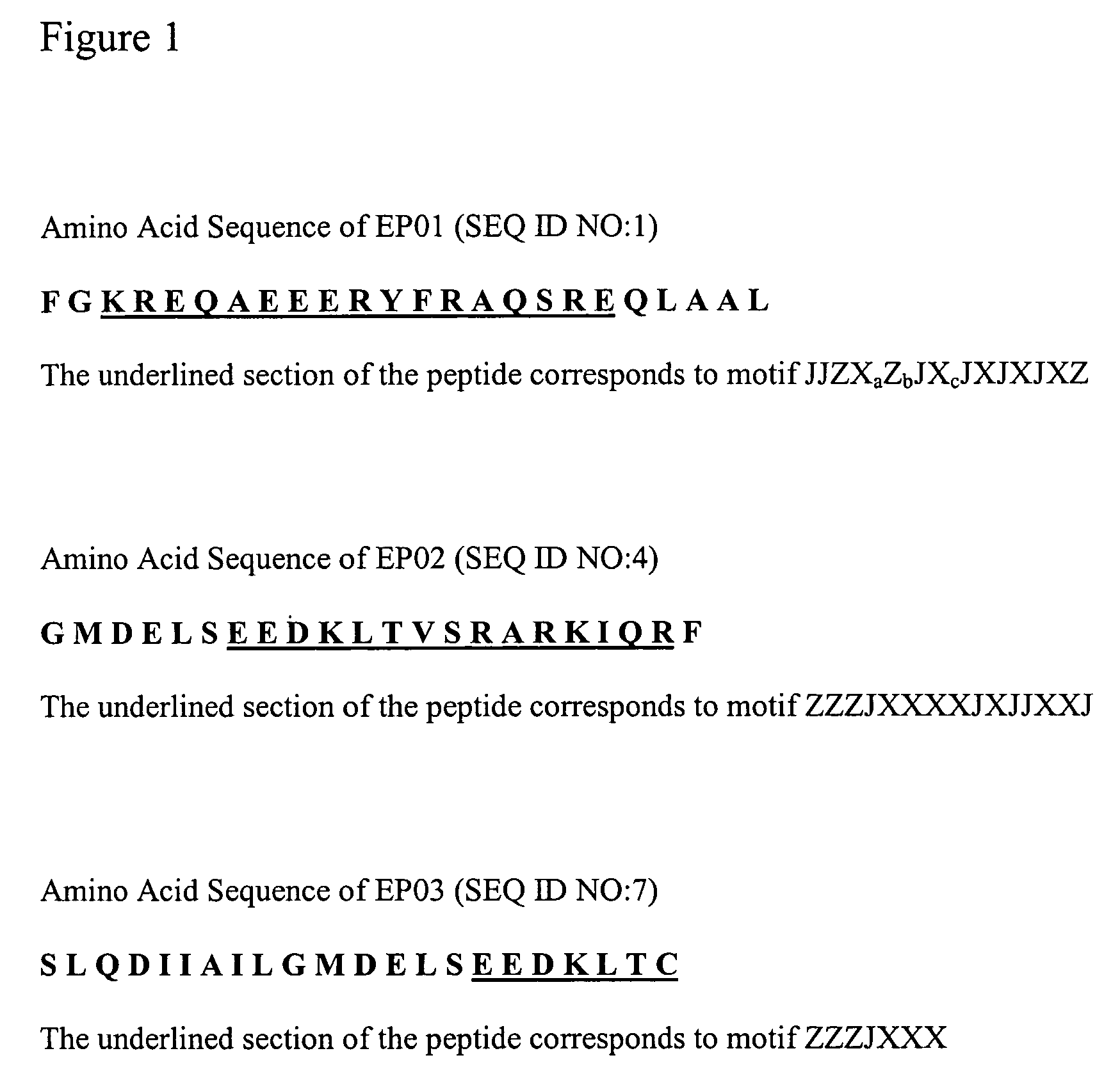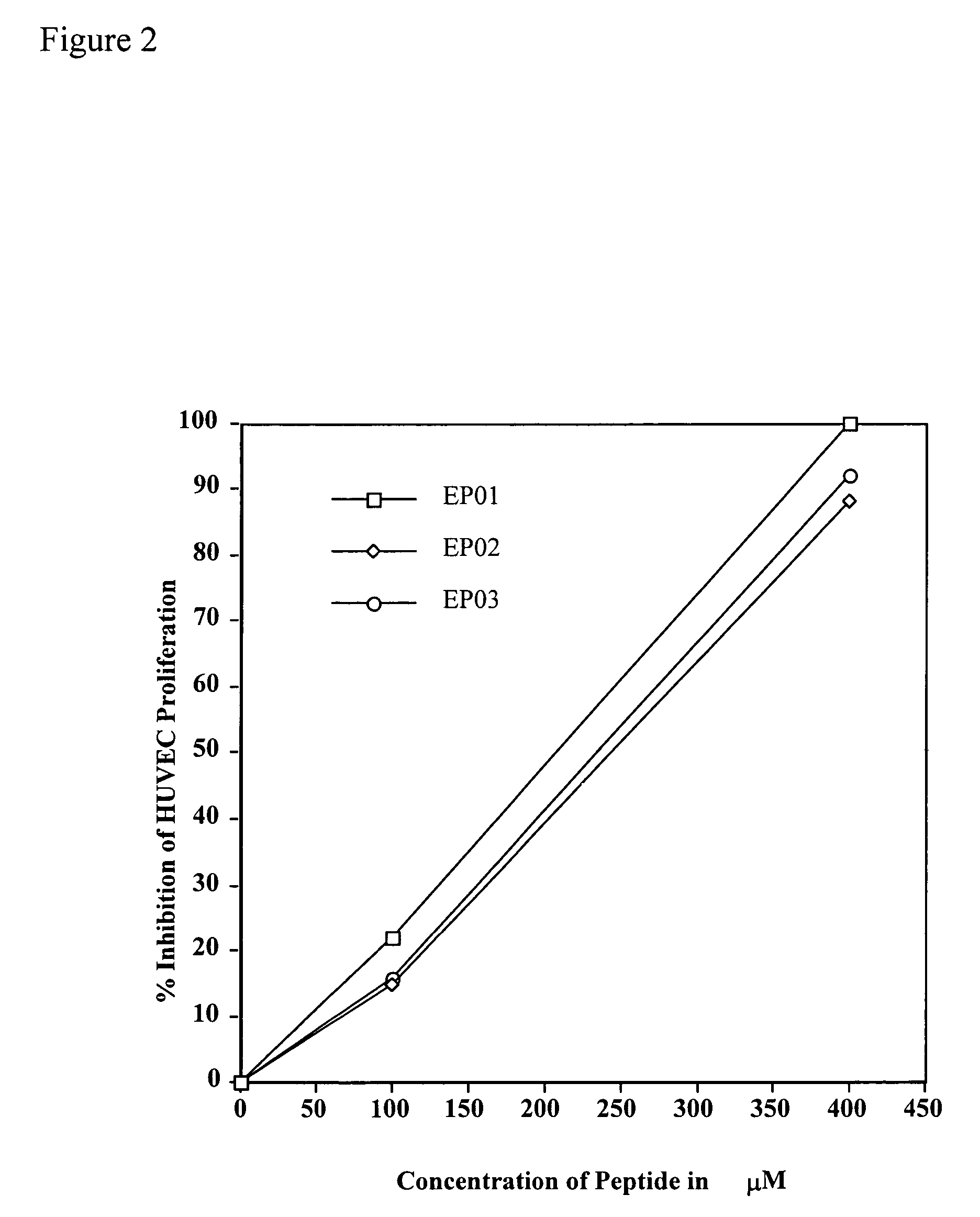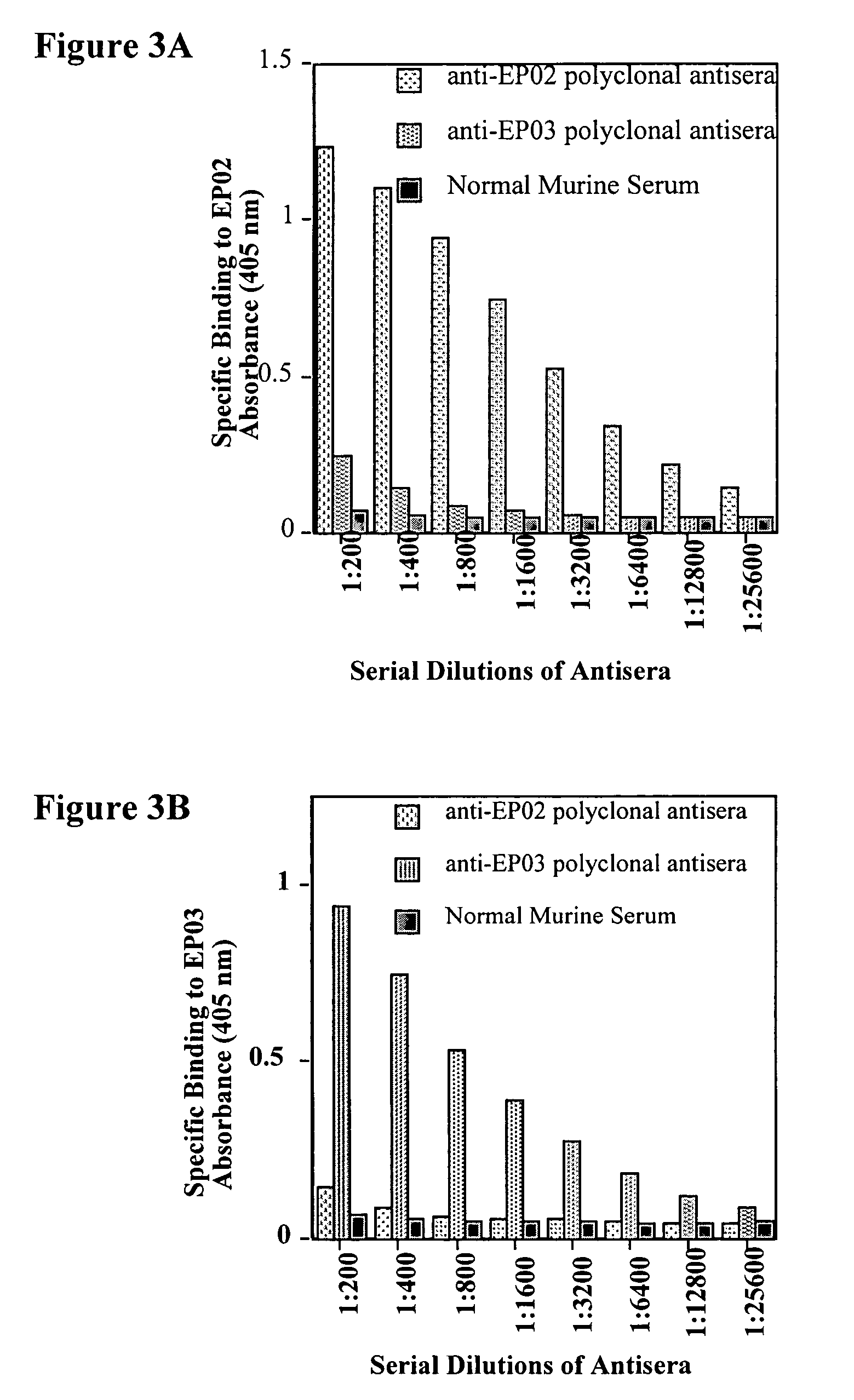Compositions and methods for inhibiting angiogenesis
a technology of angiogenesis and composition, applied in the direction of fused cells, peptide/protein ingredients, antibody medical ingredients, etc., can solve the problems that animal-derived monoclonal antibodies have limited therapeutic value in humans, and achieve the effect of inhibiting tumor neovascularization and inhibiting angiogenesis
- Summary
- Abstract
- Description
- Claims
- Application Information
AI Technical Summary
Benefits of technology
Problems solved by technology
Method used
Image
Examples
example 1
[0047]Effect of EP01 (SEQ ID NO: 1), EP02 (SEQ ID NO: 4), and EP03 (SEQ ID NO: 7) Peptides on the bFGF-induced Proliferation of HUVECs.
[0048]Proliferation assays familiar to those skilled in the art using human umbilical vein endothelial cells (HUVECs) were employed in order to determine the effect of various peptides and antibodies on the growth of bFGF-stimulated HUVECs.
[0049]Materials and Methods
[0050]The materials for this experiment included endothelial cells (HUVECs) and media for their proliferation (Media 200, fetal bovine serum (FBS), gelatin, bFGF) (Paragon Bioservices, Baltimore, Md.), and Cell Titer 96 for detection of cell proliferation (Paragon Bioservices, Baltimore, Md.). Peptides EP01 (SEQ ID NO: 1), EP02 (SEQ ID NO: 4), and EP03 (SEQ ID NO: 7) were synthesized by Multiple Peptide Systems (San Diego, Calif.).
[0051]HUVECs were routinely cultured to confluency in Media 200 containing 10% FBS. The cells were then trypsinized and plated in a 96-well plate pre-coated wit...
example 2
[0056]Production of Murine Polyclonal Antisera that Bind EP02 (SEQ ID NO: 4) and EP03 (SEQ ID NO: 7).
[0057]Antibody production protocols familiar to those skilled in the art were employed in order to produce murine polyclonal sera, which recognize and bind to peptides with specific amino acid sequences.
[0058]Materials and Methods
[0059]Peptides EP02 (SEQ ID NO: 4) and EP03 (SEQ ID NO: 7) were conjugated with KLH, a highly immunogenic copper-containing protein, using a commercially available kit (Pierce, product number 77622). The resulting conjugated peptides were used for immunization of mice. After two booster immunizations, the mice were bled and murine anti-EP02 and anti-EP03 antisera were obtained. Various dilutions of these antisera were tested for their ability to bind 96-well plates coated with 2 μg / ml EP02 and EP03. Specifically, 96-well plates were incubated for 2 hrs at room temperature with 50 μl per well of either 2 μg / ml EP02 or 2 μg / ml EP03 in 50 mM Carbonate-Bicarbona...
example 3
[0062]Production of Monoclonal Antibodies, Which Recognize and Bind EP02 (SEQ ID NO: 4) and EP03 (SEQ ID NO: 7).
[0063]Monoclonal antibody production protocols familiar to those skilled in the art were employed in order to produce monoclonal abs, which recognize and bind to peptides with specific amino acid sequences
[0064]Materials and Methods.
[0065]Monoclonal antibodies (B2G4 and D2G11), which recognize and bind EP02 (SEQ ID NO: 4) and EP03 (SEQ ID NO: 7) respectively, were generated from previously produced antisera according to well-known methods of antibody production (Seon et al. Monoclonal antibody that defines a unique human T-cell leukemia antigen, Proc. Natl. Acad. USA, 80, 845-849 (1983)). B2G4 and D2G11 mabs specifically recognized EP02 (SEQ ID NO: 4) and EP03 (SEQ ID NO: 7), respectively. These abs were also able to bind to the cell surface of HUVECs, as measured by a cell-based binding assay. Specifically, HUVECs were plated at 75% confluency in 96-well plates and stimul...
PUM
 Login to View More
Login to View More Abstract
Description
Claims
Application Information
 Login to View More
Login to View More - R&D
- Intellectual Property
- Life Sciences
- Materials
- Tech Scout
- Unparalleled Data Quality
- Higher Quality Content
- 60% Fewer Hallucinations
Browse by: Latest US Patents, China's latest patents, Technical Efficacy Thesaurus, Application Domain, Technology Topic, Popular Technical Reports.
© 2025 PatSnap. All rights reserved.Legal|Privacy policy|Modern Slavery Act Transparency Statement|Sitemap|About US| Contact US: help@patsnap.com



